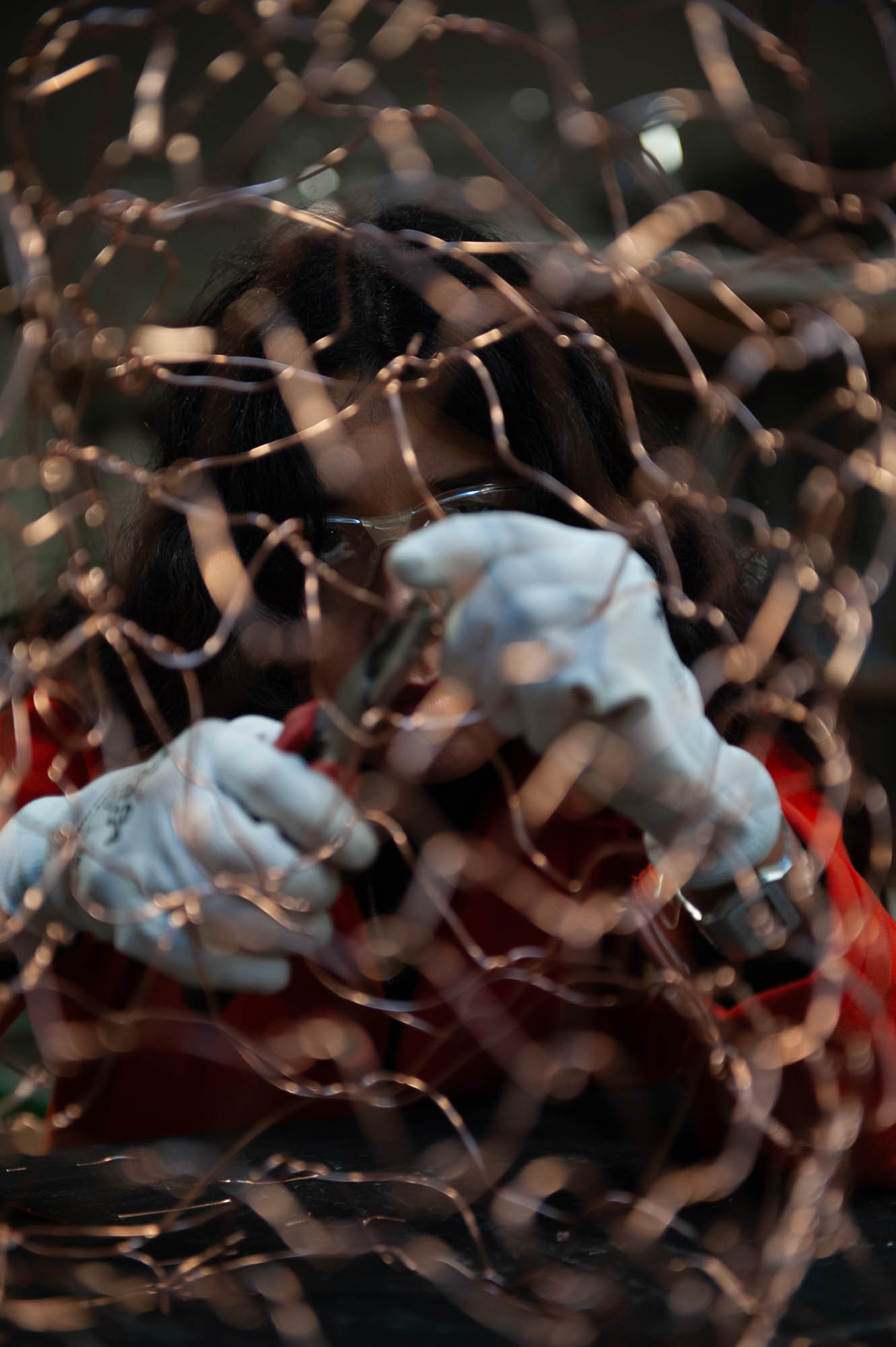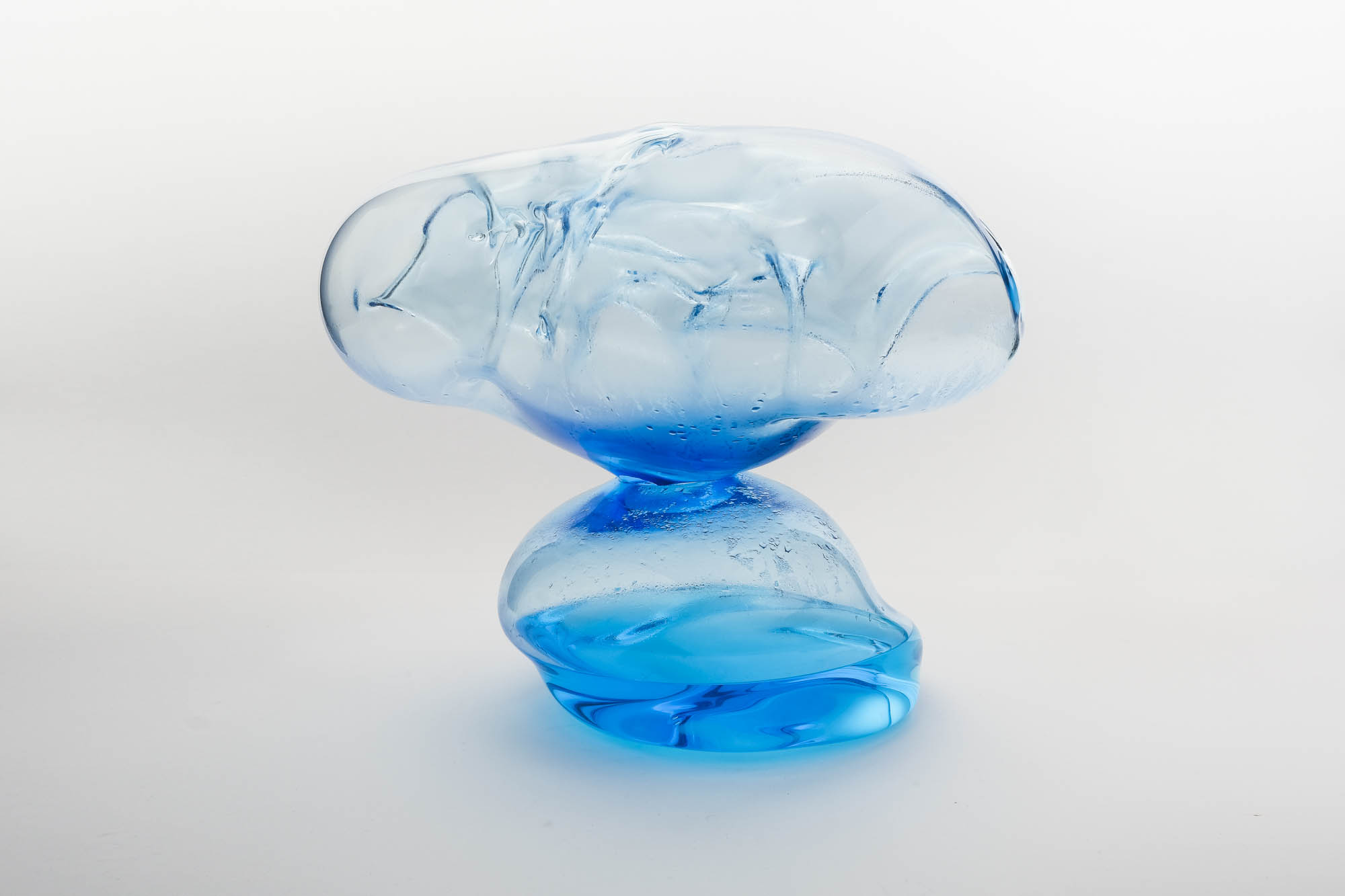Estrid Lutz was born in 1989. She is a graduate of the École nationale supérieure des beaux-arts de Paris and the Art Center College of Design Los Angeles. She lives and works in Puerto Escondido (Mexico).

Morteza Herati, Estrid Lutz at the Cirva, 2021.
Photo © Morteza Herati
Estrid Lutz, Poumon de mer, 2023, production / realisation Cirva, Marseille.
© Estrid Lutz ; photo © Cirva / Bérangère Huguet
— Flying fishhhhhhhhhhhhhh
— Jelly timer (previously Jelly times)
— Purple dinophyta
— Intermareal abyss
— Black Tide _diatom
— Cyanée azul (previously Cyanée bleue)
— Plantoïds
— Sponge (series)
— Cosmic sponge _in the dark studio
— Sponges _deep version
— Alien sponge
— Diatoms
— Diatoms oo1
— Diatoms oo2
— Porifera _honeycomb
— Acid ocean particle
— Poumon de mer (series)
— Poumon de mer _abyssal
— Interstellar diatoms
— Anemone
— Sanguine collapse
— Sea snake mutation
— Molecule drexciya (previously Ultraviolet sea particle)
— Malagua
2024
- Chaos sensible, La Citadelle, Villefranche-sur-Mer, France, June 29–September 22
- Carte blanche à Pierre Passebon autour de l’œuvre de Jacques Sultana, Pavillon Southway, Marseille, France, July 2–November.
- The Siren Song – water as told by artists, Académie de France à Rome – Villa Médicis, Rome, Italia, October 4, 2024–January 13, 2025
2025
- Arco Lisboa, Galerie Kandlhofer’s booth, Lisbon, Portugal, May 29–June 1st
-
Estrid Lutz — cahier du Cirva, Marseille, éditions Cirva, 2024, 32 pages, under the direction of Stanislas Colodiet, Camille Frasca and Estrid Lutz, featuring texts by Dorothée Dupuis, Stanislas Colodiet, Camille Frasca and Estrid Lutz, graphic design: Johanna Himmelsbach, ISBN : 978-2-907116-15-2, price: 12 euros
-
Le Chant des sirènes. L’eau racontée par les artistes, cat. expo., Rome, Académie de France à Rome — Villa Médicis, Paris, éditions Empire, 2024, 352 pages, graphic design: Syndicat, ISBN: 979-10-95991-39-7, price: 28 euros
I appropriate hi-tech industrial materials in order to turn their original purpose into something more poetic, brutal, and surprising by applying them in an alien way. My recent sculptures and collages were made from sturdy, lightweight materials known as lightcore, including kevlar, aluminium honeycomb, fiberglass, and epoxy resin. These materials are commonly used to manufacture satellites, spaceships, aircraft, cars, weapons, bulletproof vests, and large-scale communications devices.
At the Cirva, I would like to take experimental cosmic trips without limits. I am dreaming up projected spaces, such as floating oceans, a fusion of the infralives in the seas and the skies, as well as cyberspaces in distress in poetic virtual reality devices. My project begins with the image of a wave that detaches from the earth’s crust, enters orbit, and circles the earth, brushing past a variety of spacecraft, stray electronic debris, secret information, and invisible microorganisms from the abyss that were spit out during the interspatial tide. My research on glass can be likened to a ballad based on various unidentifiable shapes, provoking collisions, encounters, fusions, diffractions, disappearances, and unexpected recognition in a fog that includes the Kessler syndrome. I am imagining a glass “debris” factory producing energy—light, for example—and a play on optical depths causing images to appear and disappear according to the arrangement of cells and even the coexistence of technological psychic entities wandering about in the transparency and which produce connective material.
📷 Estrid Lutz
🎧 Incalmo #2 — Estrid Lutz, décembre 2020, an experimental radio programme by Duuu radio at the Cirva
